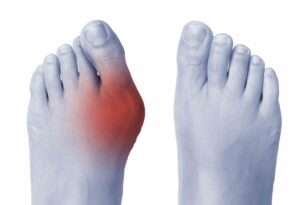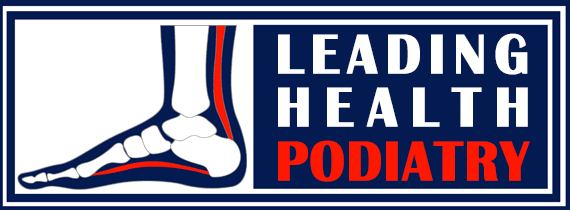Bunion
Bunions are common foot problems that affect both men and women, causing discomfort and difficulty with footwear. If you’re concerned about developing a bunion or already notice changes in the shape of your foot, Leading Health Podiatry can help with diagnosis and treatment options.
What is a Bunion?
A bunion is a bony bump that forms at the base of the big toe joint, causing the big toe to angle towards the smaller toes. Bunions develop gradually, often causing pain and redness when irritated by tight shoes. In later stages, they can lead to arthritis and affect balance.
How Do Bunions Develop?
As the bunion progresses, it causes the bones and joints to change shape. Initially, the big toe may be flexible, but over time, it becomes fixed, leading to pain and difficulty in finding comfortable footwear. Early intervention is key to managing bunions effectively.

What Causes Bunions?
Bunions are caused by increased pressure on the big toe joint. Contributing factors include:
- Flat feet or pronation
- Ill-fitting shoes, especially high heels
- Foot alignment issues, often influenced by genetics
How We Help Treat Bunions
At Leading Health Podiatry, we emphasize early detection and non-surgical treatments. Our approach may include:
- Custom Orthotics to relieve pressure on the big toe joint
- Footwear Recommendations for better support
- Exercises to strengthen foot and toe muscles
- Non-Surgical Treatments to manage pain and prevent progression
Surgical options are considered only when conservative treatments are ineffective.
Tailor’s Bunion (Bunionette)
Bunions can also develop on the outside of the foot, near the little toe, known as a tailor’s bunion. Although smaller, it can still cause pain and difficulty finding shoes. We offer treatment for tailor’s bunions as well.
Top Tips for Bunions Care:
- Seek early diagnosis and treatment.
- Choose the right footwear.
- Use custom orthotics if prescribed.
- Schedule annual check-ups.
Bunion FAQs
What is the best treatment for bunions?
Non-surgical options like orthotics and proper footwear are typically recommended first.Do non-surgical treatments work?
Yes, many patients find relief with non-surgical treatments like custom orthotics.How long does it take to recover from surgery?
Recovery can take 6 to 8 weeks, with full recovery up to 6 months.
Contact Leading Health Podiatry
If you’re experiencing pain or concerned about bunions, contact Leading Health Podiatry for personalised care. Our team is here to help you find the best treatment for your feet.
